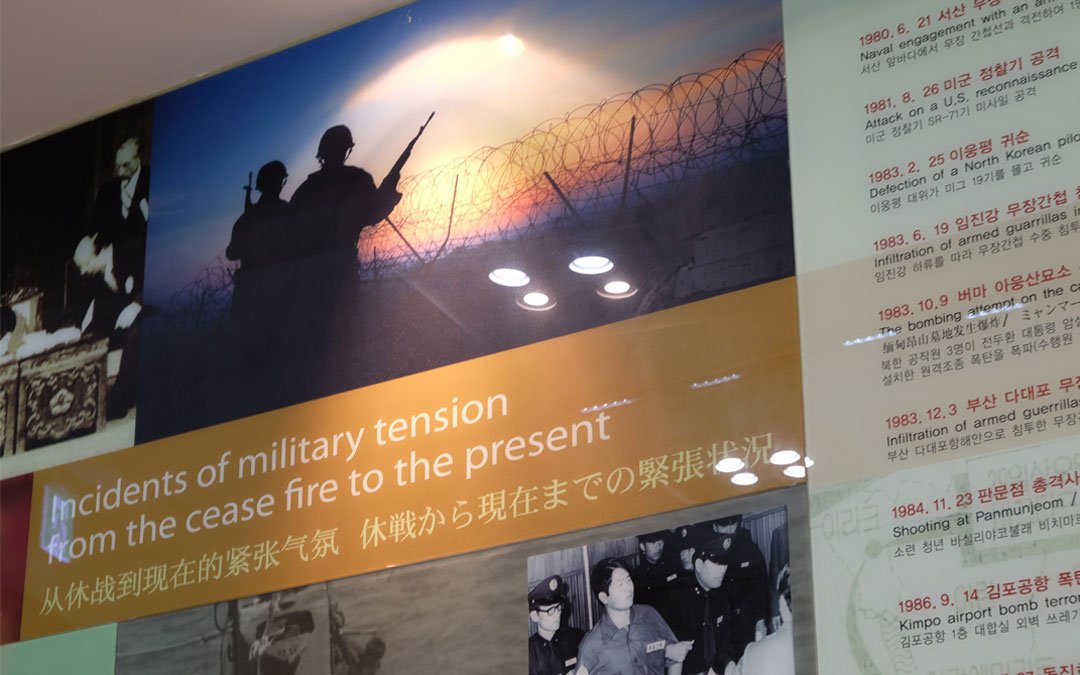Barbed wire fences, landmine markings, soldiers reviewing our passports… just what did I get myself into after a 1.5hour drive from Seoul?
Before we got off from our tour bus, our guide instructed repeatedly ‘Please do not wander off on your own. Even though it is a Demilitarized zone, it is heavily guarded by military forces. There are landmines around this zone, stay away from the forest. Follow me closely.’
We arrived somewhere remote, deprived of the energy and bustle of modern South Korea, on a strip of land that separates North and South Korea. And I, finally see why the former President of United States Bill Clinton once described it as ‘the scariest place on Earth’.
Barbed wire fences, landmine markings, soldiers reviewing our passports… just what did I get myself into after a 1.5 hour drive from Seoul?
The Demilitarized Zone (DMZ) was established on July 27, 1953, when the Armistice Agreement was signed during the Korean War. It is a no-man’s-land fringed with barbed wires, tank traps and landmines between North and South Korea. Since a peace treaty was never formalised to end the war, combat troops massed along the borders of the 2km-wide stretch of land in a tense military standoff.
Technically speaking, both countries are still at war.
What an ominous fact.
Out of fear, I asked my English-speaking Korean tour guide, Lisa, on our geographic location and she reassured us that, ‘We are still standing on the Southern soil, Paju city. But they (North Korea) can see us.’
And so, a quest was born: I need to complete this tour alive.
The briefing I received before the trip is a set of rules to observe; when visiting the DMZ, the tourist must always carry his/her passport and adhere to a specified dress code that is: no military print and provocative text.
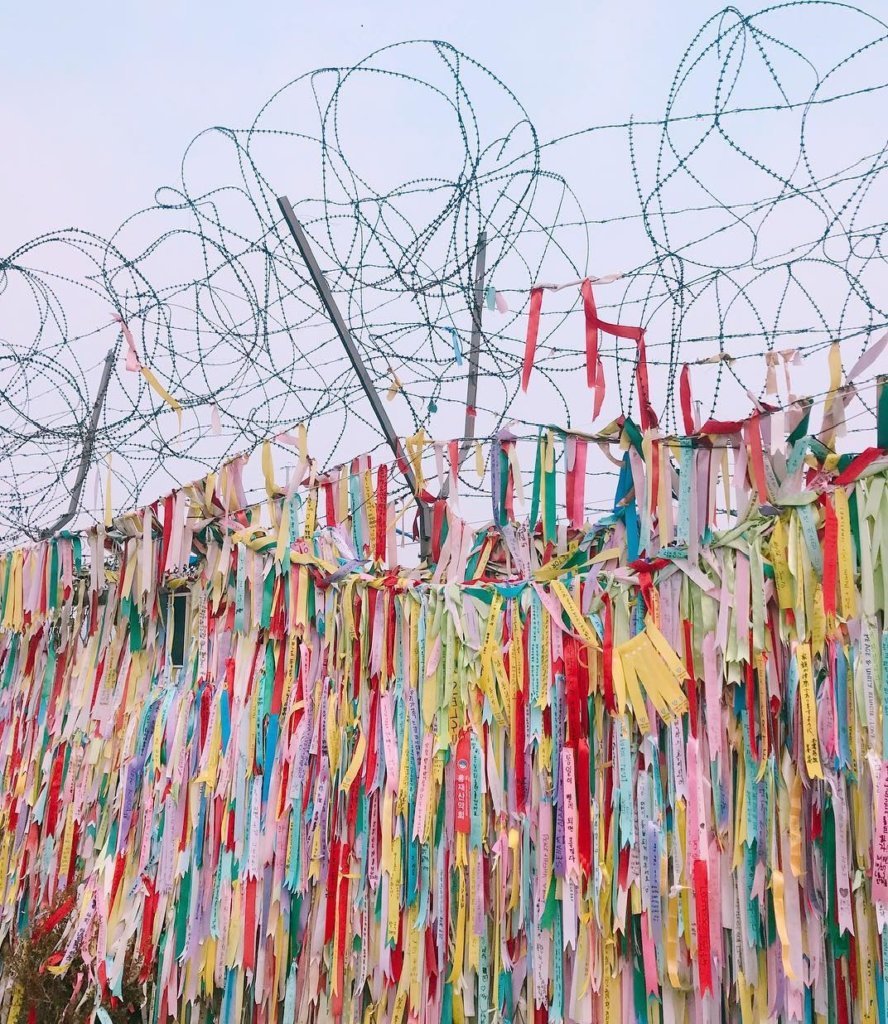
My first stop at Paju city, Imjingak Resort features a park with monuments and artefacts about the Korean War, and a vantage point overlooking the Freedom Bridge.
The aptly named Freedom bridge is a place for prisoner repatriation. At the end of the three-year Korean War in 1953, 13,000 prisoners of war were freed to cross over to South Korea.
The estranged relationship between the North and South has resulted in millions of displaced families since the 1950s. Multi-coloured prayer ribbons strung on the fences are words of longings from separated families, in hope that one day, they can reunite with their family members in the north. At that moment, I felt the everlasting, intangible losses of war, and how the peace we have made today should never be taken for granted.
After half an hour had passed, Lisa shepherded all of us onto the bus to depart for the next site. We are required to follow our tour operator’s schedule as visiting the DMZ is a controlled tourism operation.
We arrived at the Third Infiltration Tunnel, one of the key tourist attractions which comprise a DMZ video hall, gift shop and an entry into the tunnel.
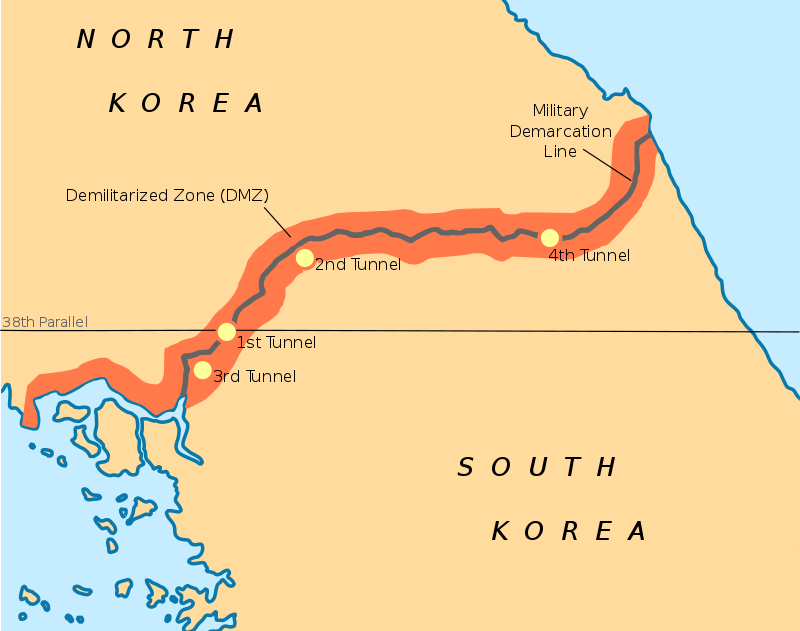
Image from Wikipedia
‘Please leave all your belongings in the locker, grab a helmet and form a line. We are going to trek down the third infiltration tunnel.’
My spirit of adventure was piqued. Little did I know this would be the most physically demanding walk in my lifetime and I wouldn’t want to do it again. I warn you, this tunnel is not made for the faint-hearted, tall or the claustrophobic. The tunnel lies 73 meters underground which is equivalent to a 25-storey building.
North Korea has dug a total of four tunnels under the DMZ to launch a sneak attack on South Korea. The Third Infiltration Tunnel discovered in 1978 runs 1,635 meters long, with a height and width of approximately 2 meters. It is estimated that over 3,000 soldiers would have been able to trek through the tunnel per hour.
‘They denied the fact that they planned to invade South Korea. Instead, they claimed that this was a coal mine. In fact, this area doesn’t contain coal, it is a granite formation.’
As we descended into the tunnel, the stale and mouldy smell threw me off – this experience has since made it to my list of misadventures abroad.
The entire journey of descending and ascending the third infiltration tunnel took us almost an hour.
The tunnel slopes downwards at 11 degrees, it was easy to walk down but making the way up was a nightmare. Imagine climbing up the stairs of a 25-story building! I was gasping for fresh air and drenched in sweat as I trudged up from the tunnel. It burnt all the calories I had for breakfast. And I must give props to our guide, Lisa, she has probably trekked up and down this steep, narrow and damp tunnel umpteen times
‘Did you enjoy this tunnel exploration? This must have been a very good exercise.’
Ah, I shook my head. Exercise indeed. I looked around and everyone was exhausted. It was a sort of travel milestone worth remembering, like completing a race. I posed for a photo and made my way to the gift shop and pick out a memento. Guess what. I bought a shirt.
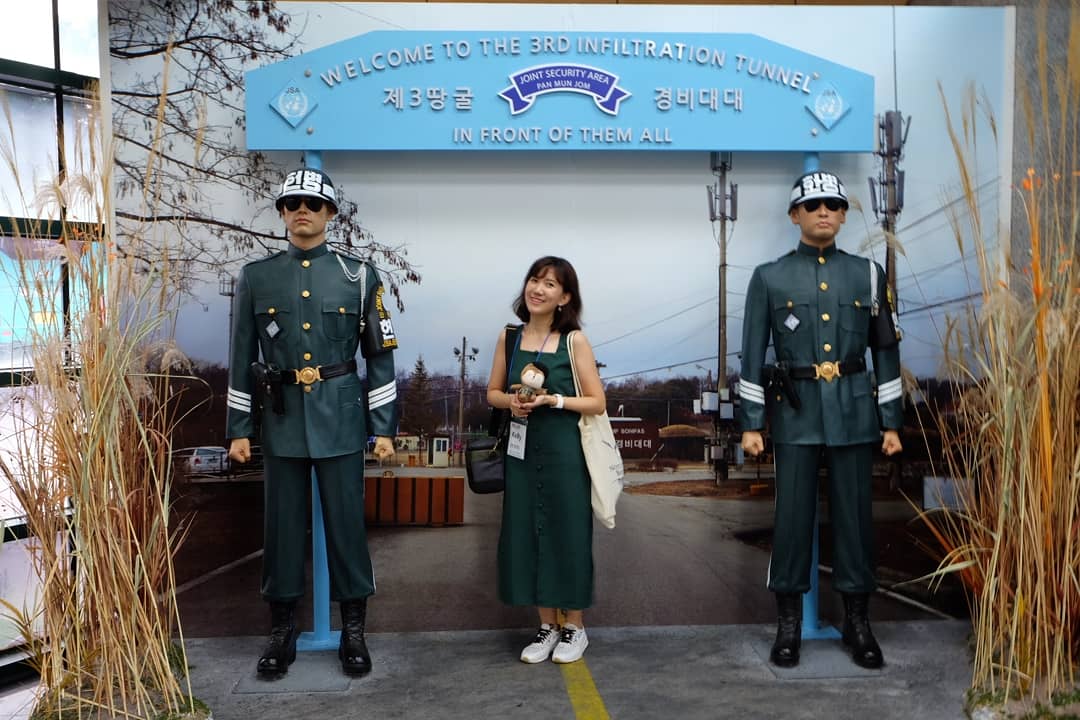
We got back on the tour bus again and made our way to the dormant railway station with tracks that connect to North Korea. I never knew it was possible to take a train to North Korea.

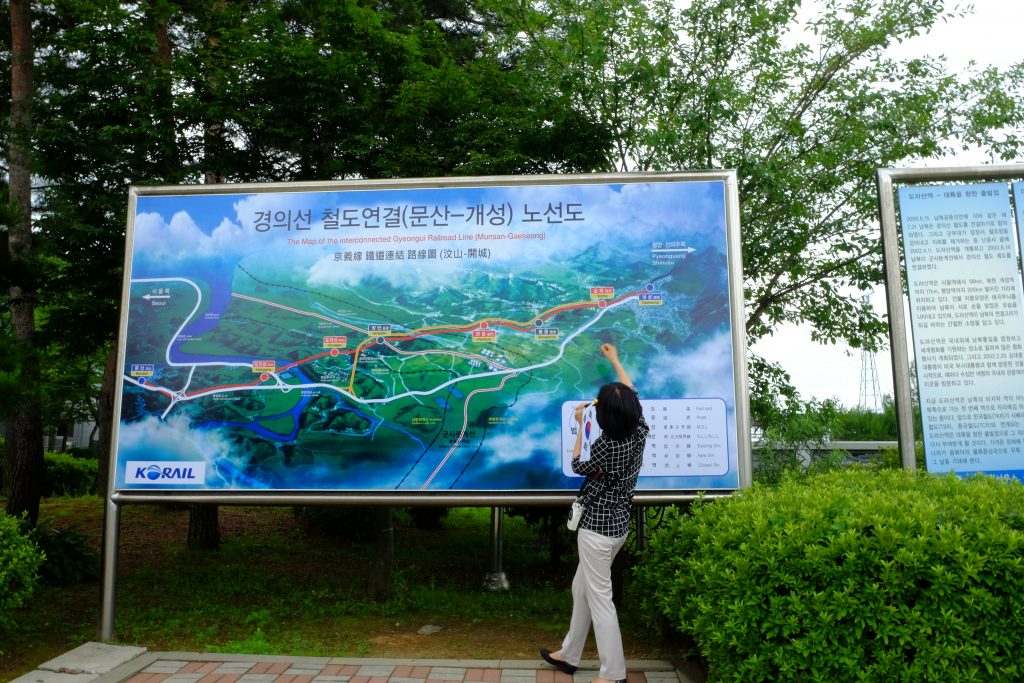
Dorasan Station is one of the northernmost railway stations on the Gyeongui Line.
In 2000, Dorasan station was introduced by South Korea and North Korea as an endeavour of Korean unification. Later in 2003, the railway tracks were finally connected at the Military Demarcation Line (MDL) within the DMZ, which is also known as the Armistice Line that divides the Korean Peninsula into two halves.
Dorasan station is modern and fully equipped with train schedule board, ticketing counters, a full custom and immigration area and arrivals hall. It now serves as a tourist attraction rather than a functional transit as no trains run between the two states.
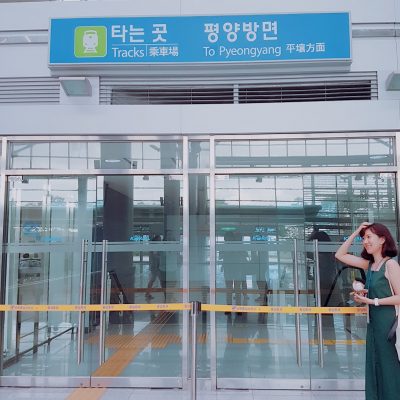
I was impressed by the facility’s readiness, I entered the gantry and walked into the lonely platform.
I always remembered the railway platform as a place full of hustle and bustle, passengers eagerly waiting for the arrival of the train, a few pacing up and down the platform, some were sitting on the bench reading newspaper… but I felt none of that here. It was eerily quiet, and I felt the lingering presence of a few military soldiers in sunglasses observing my conduct.
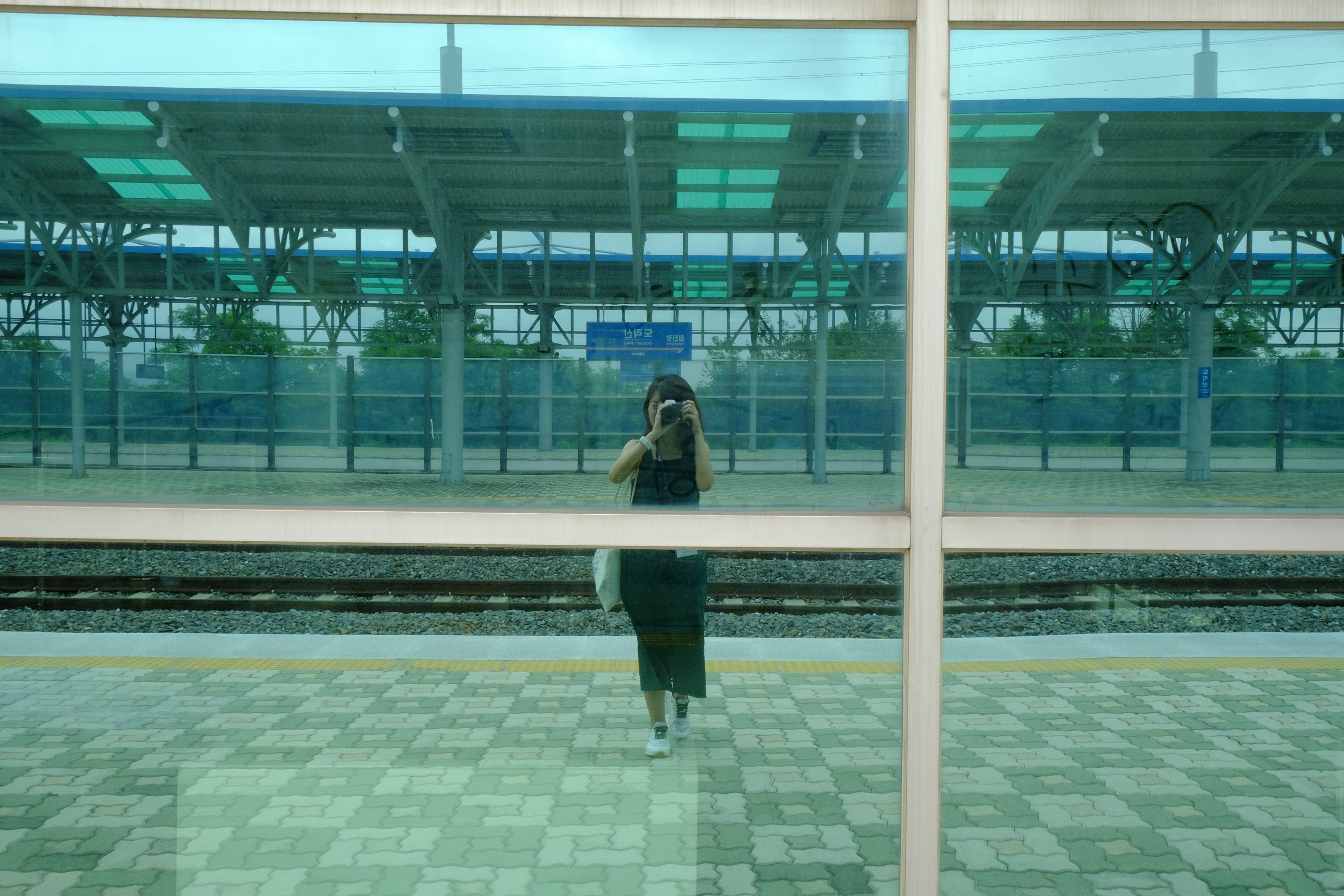

I came across a large map embedded on one section of the platform – Trans Eurasian Railway Network.
There is a possibility of moving people from South Korea all the way to Europe by rail. Well, if and only if, the relations between North and South improve.

We left the train station and drove up to the Dora Observatory deck which to my surprise was bustling with crowd.
‘This is our final stop at Dora Observatory the star attraction of DMZ tour,’ exclaimed Lisa.
The Dora Observatory takes our eyes to North Korea mountainscape. Here we were able to take a closer peek into the Hermit Kingdom through a row of coin-operated binoculars. As expected, tourists hoarded the binoculars, giving up coins generously to spy on North Korea.
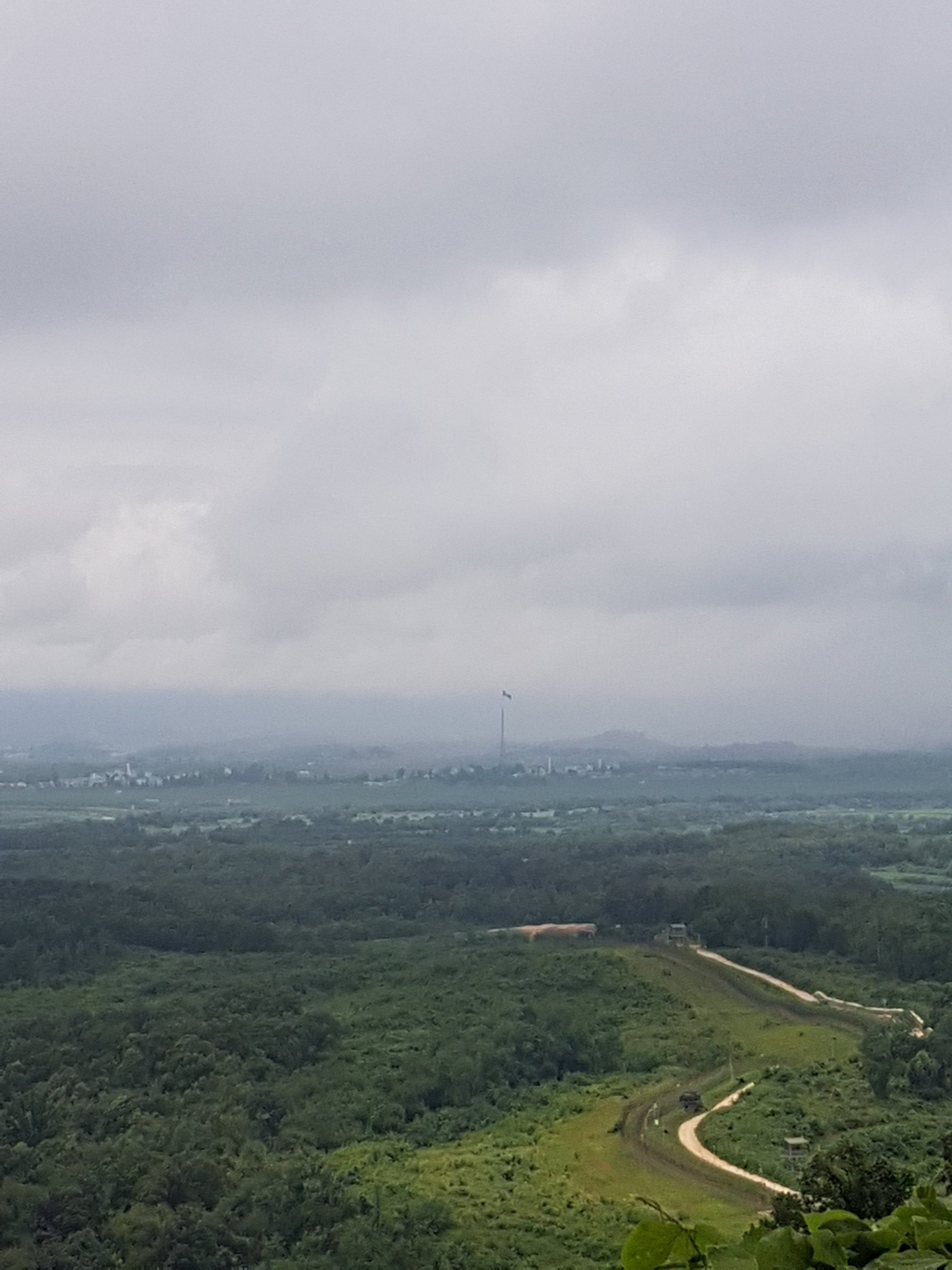
‘This is our final stop at Dora Observatory the star attraction of DMZ tour,’
I paid 200 won to get a fleeting 30 seconds glimpse of North Korea’s flag. Rumour has it that the North Koreans raised the structure higher to show off their flag.
On the bus ride back to civilisation, I thought about where I’d been five hours before: the world’s most militarised border, a dangerous world away. The question that bubbled up was not so much, ‘Is this trip worthwhile?’ But rather, what did I seek to discover and learn?
It occurred to me that life’s moments seem to be provisional and the perception we carry with us are readily thrown over by the next epiphany. Having completed the DMZ tour safely, I can’t help but feel anxious for South Korea, who must contend with an unpredictably aggressive neighbour next door.
Look, the North Koreans have dug four tunnels under the DMZ to spy on the South, who knows if there are more tunnels to be discovered?
On a lighter note, those who have watched the hit Korean drama Descendants of the Sun, this is certainly the place to keep your eyes peeled for handsome South Korean military men.
